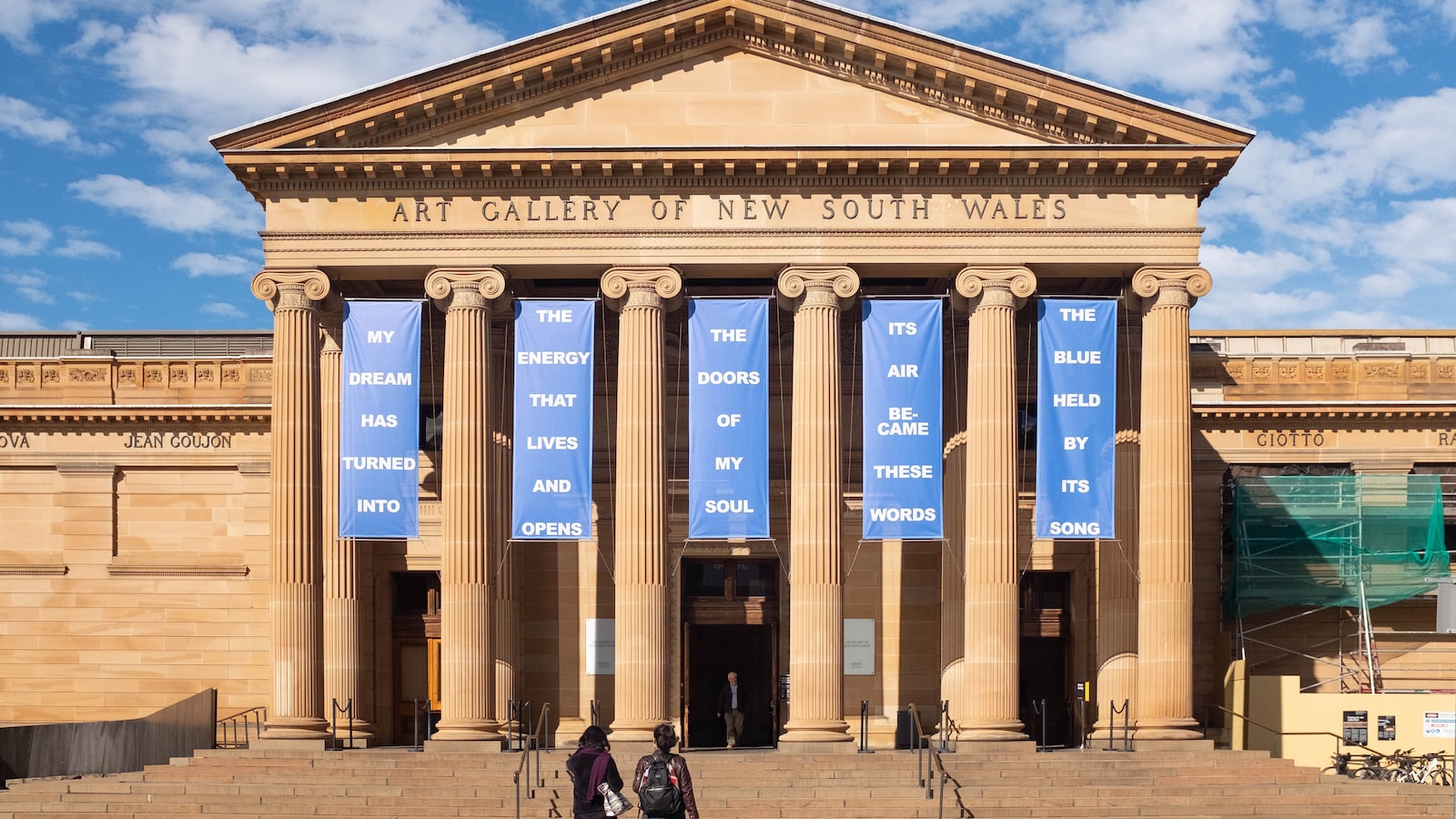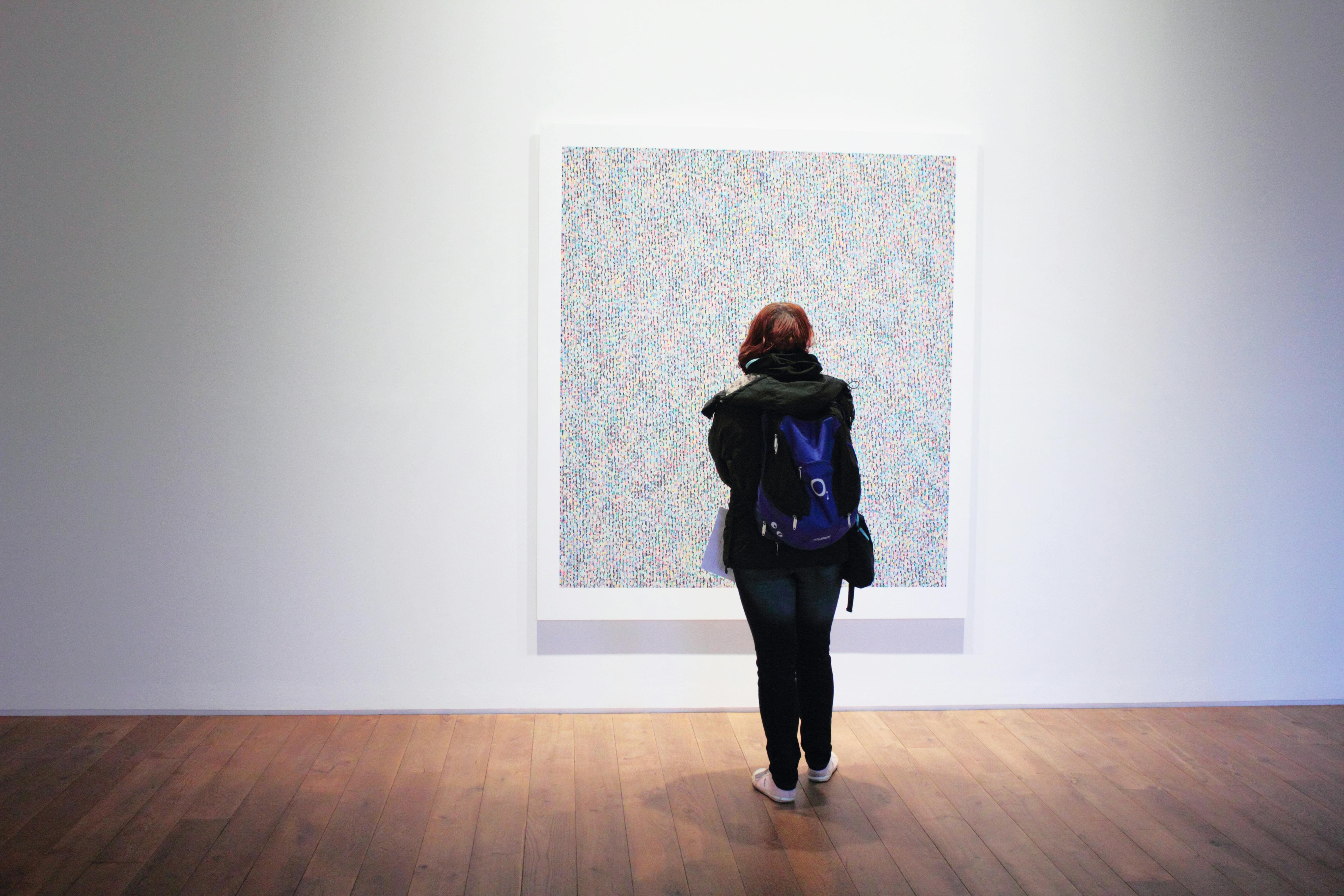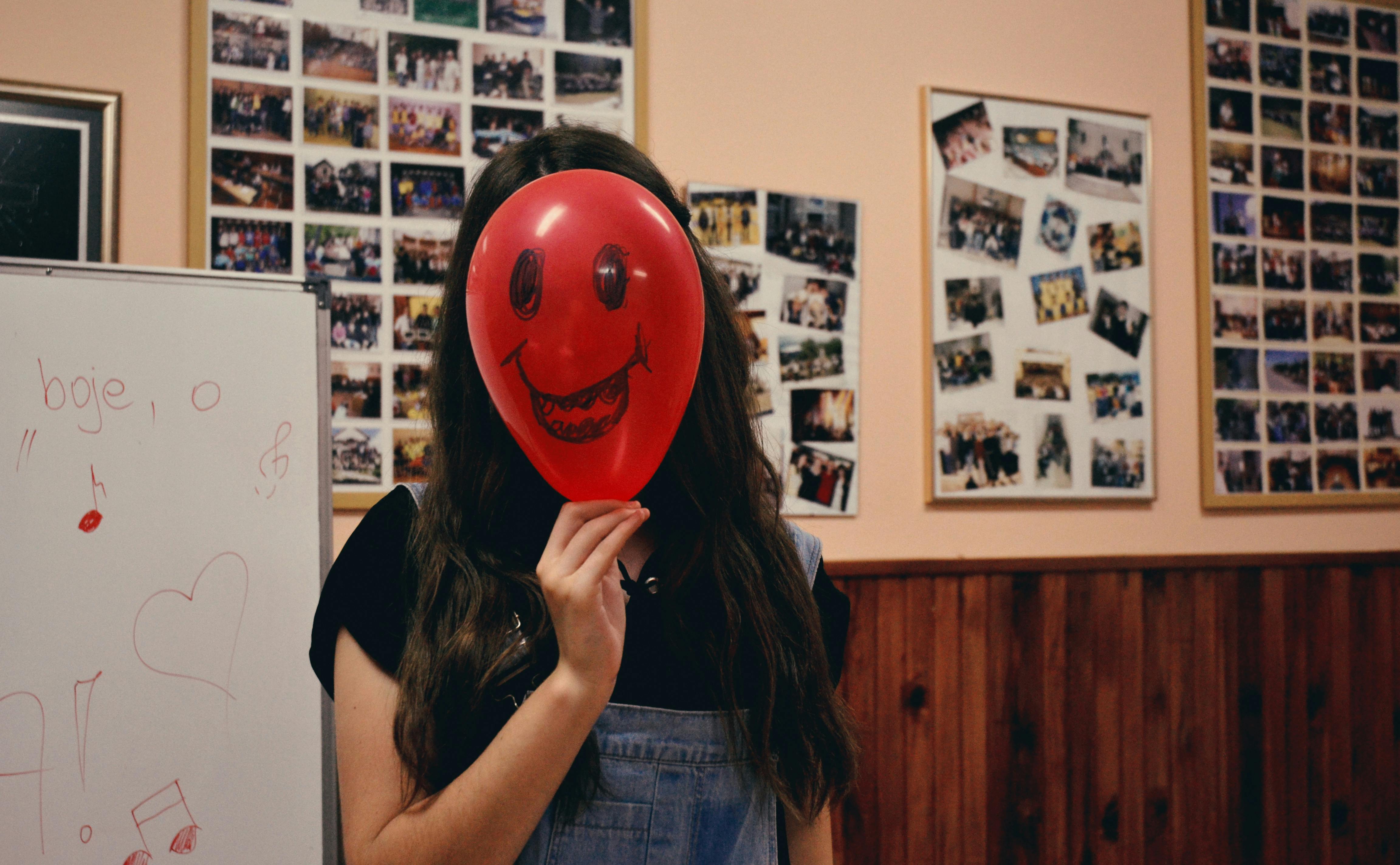What To Wear To An Art Gallery

Visiting an art gallery can be a fun and exciting experience. It can also be intimidating, especially when it comes to deciding what to wear. After all, you don’t want to look too dressed up or too casual. The good news is that you can find the perfect outfit for any art gallery event with just a few style tips. Whether you’re attending a formal opening night or just visiting on your own, here are some tips on what to wear to an art gallery.For an art gallery, it is best to dress in a smart-casual style. Men should wear dress pants or khakis with a collared shirt and dress shoes. Women can opt for a dress, skirt, or trousers paired with a top and heels or flats. Avoid wearing overly casual clothing such as jeans, T-shirts, and sneakers as these may be deemed inappropriate for the environment. Additionally, accessories like a scarf or jewelry can add an extra touch of style to your look.
Comfortable but Polished Outfit
When it comes to creating a comfortable but polished outfit, it’s all about finding the right balance between comfort and style. The key is to choose pieces that are both stylish and comfortable, so that you don’t have to sacrifice one for the other. Start by choosing a comfortable base layer such as a lightweight t-shirt or tank top. Then, add a stylish jacket or cardigan for an extra layer of warmth and polish. Choose trousers or jeans that are fitted but not too tight so you can move freely without feeling restricted. When it comes to shoes, opt for flats or low-heeled boots with plenty of cushioning support for all-day comfort. Finally, accessorize with simple jewelry and a stylish handbag or clutch to complete your look. With these tips in mind, you can create an outfit that is both comfortable and polished for any occasion.
Remember, comfort doesn’t have to mean compromising on style. With the right pieces and accessories, you can create an effortless look that is both chic and comfortable at the same time.
Dress to Impress
When it comes to dressing for success, the old adage “dress for the job you want, not the job you have” still holds true. Whether you’re interviewing for a new job or attending a professional event, dressing appropriately can help you make a good impression and boost your confidence. Making sure that your clothing is neat, clean, and appropriate for the occasion is essential in projecting an image of professionalism and respect.
It’s important to understand that the way you dress can affect how others perceive you. While it’s true that beauty is in the eye of the beholder, it’s also true that there are certain standards of dress that are accepted by most people in professional settings. For example, wearing a suit and tie to an interview will show that you take the opportunity seriously and have respect for the interviewer. On the other hand, wearing jeans or shorts would indicate a lack of respect and could cost you the job.
When selecting what to wear, be sure to think about how it will be perceived by others. Make sure that clothes are clean and pressed, shoes are polished, and accessories such as jewelry or watches are tasteful and not too flashy. Pay attention to details such as buttons being buttoned correctly or laces tied properly. The overall goal should be to look neat, professional, and well-groomed.
Ultimately, dressing appropriately is an important part of creating a positive first impression on people who may have an impact on your future career prospects. Taking time to choose clothing that reflects your professionalism can help ensure success in any situation!
Choose the Right Colors
Choosing the right colors for your project can be a daunting task. There are so many options out there and picking the wrong colors can drastically change the look and feel of your project. Fortunately, there are a few things you can do to make the process easier.
First, consider your target audience. Different colors evoke different emotions in people, so it’s important to pick colors that will resonate with your intended audience. For instance, if you’re targeting an older demographic, more muted tones may be appropriate. On the other hand, brighter colors may be better suited for a younger demographic.
Second, consider the purpose of your project. If you’re creating something that needs to convey seriousness and professionalism, then opt for more subtle shades and hues. However, if you’re creating something creative and fun, then feel free to choose brighter shades or even unusual color combinations that will draw attention to your work.
Third, research color theory and try to understand how different colors interact with each other. This will help you create a harmonious palette that looks good together and helps bring out the features of your project that you want to emphasize. Additionally, consider incorporating accent colors into your design to add visual interest without overpowering it with too much color.
Finally, take some time to experiment with different palettes before settling on one for your project. You may be surprised at how different combinations of colors come together to create something unique and amazing!
At the end of the day, choosing the right colors is all about understanding how various shades interact with each other and finding what works best for your audience and project goals. With a little bit of research and experimentation, you’ll be able to find just the right combination!
Keep Accessories Simple
When it comes to accessorizing, it is always best to keep it simple. Too many accessories can make an outfit look cluttered and unappealing. Instead, choose one or two pieces that will add a stylish touch to your look. For example, if you are wearing a dress, adding a statement necklace or a pair of earrings will instantly elevate the ensemble. A bold belt can also be used to bring attention to an otherwise plain outfit or to cinch in the waist for a more flattering silhouette. When accessorizing for an event, remember that less is more; don’t go overboard with too many pieces as this can be distracting and take away from the overall look.
For casual wear, you may want to opt for smaller pieces such as dainty necklaces and delicate bracelets. These subtle touches can add just enough interest without being overwhelming. If you prefer a bolder style, try adding one statement piece such as an oversized ring or bracelet. This will help draw attention to your outfit without going overboard on accessories.
No matter what type of accessories you choose, always remember that less is more when it comes to accessorizing. Make sure that each piece serves a purpose and complements the overall look of your outfit. By keeping things simple, you’ll be able to create an effortlessly stylish ensemble that looks polished and put together.

Wear the Right Footwear
Good footwear is essential for a healthy and active lifestyle. Shoes that fit properly and provide adequate cushioning and support can help protect your feet from injury, as well as improve your posture and performance. When shopping for shoes, it’s important to take into account the type of activity you plan to do, the shape of your feet, and any existing health issues you may have.
For running or walking, it’s important to select a shoe that fits properly and provides ample cushioning. Look for a shoe with minimal arch support if you have high arches, and choose one with more arch support if you have low arches. If you are prone to bunions or plantar fasciitis, look for a shoe with extra room in the toe box so your toes do not press against the sides of the shoe.
If you plan to do aerobic exercise such as aerobics classes or Zumba, look for shoes with adequate cushioning and flexibility. Cross-training shoes are often a good choice because they offer both cushioning and stability. Shoes designed specifically for aerobics may also be a good option because they are usually lightweight and flexible yet provide plenty of cushioning.
When shopping for sports shoes such as basketball or tennis shoes, make sure they are comfortable right away – don’t assume they will “break in” over time. Choose shoes with appropriate cushioning that also provide stability when making lateral movements, which is key when playing sports like basketball or tennis.
Finally, don’t forget to check the soles of your shoes periodically – worn-out soles can cause falls due to lack of traction on slippery surfaces. Replacing your footwear regularly will help ensure your feet stay healthy and safe no matter what activity you’re doing!
Look for Inspiration
Finding inspiration is a great way to jumpstart creative ideas and projects. It can help to get out of a rut and find new ways to approach a task or challenge. There are many sources of inspiration that can be found online or in real life.
The internet is a great source of inspirational content. From social media to websites, there are many resources that can be accessed quickly and easily. For example, checking out popular hashtags on Instagram or reading blogs about creative projects can be inspiring and help spark new ideas for your own work.
The physical world also contains plenty of potential sources of inspiration. Taking a walk in nature, visiting an art gallery or museum, or even just looking around your local area can provide new perspectives on life and spark creative ideas. Talking to people who have achieved success in their field is another great way to gain insights into the creative process and find fresh ideas for projects.
No matter where you look for inspiration, it’s important to stay open-minded and explore different possibilities. There is no one-size-fits-all approach when it comes to finding inspiration so be willing to try different things until something clicks with you. With some patience and experimentation, you can find the perfect source of inspiration for your project!
Consider the Weather Conditions
When planning any outdoor activity or event, it is important to consider the weather conditions. The weather can have a significant impact on events, from attendance to safety. It is essential to know what the weather will be like in advance so that the necessary preparations can be made.
For example, if it is going to be a hot day, then it would be wise to bring extra water and sunscreen for those attending the event. Similarly, if there is a chance of rain, then people should be advised to bring umbrellas or other rain gear. Taking into account the wind speed and direction can also help ensure that tents and other items are properly secured.
It is also important to pay attention to extreme weather conditions such as thunderstorms, tornadoes, or hurricanes. If these are in the forecast, then it may be best to reschedule or cancel any outdoor activities. In this way, people can stay safe and avoid potential harm or damage.
Finally, if an event takes place over multiple days or weeks, then it is wise to check the long-term forecast in order to plan accordingly. This will help ensure that everyone involved has an enjoyable and successful experience despite any unexpected changes in the weather conditions.

Conclusion
When attending an art gallery, it’s important to dress appropriately. You should aim for a look that is both stylish and comfortable. Choose comfortable, classic clothing pieces like blazers, button-down shirts, and dress pants. Add a touch of personality with accessories like scarves and jewelry. To complete your look, consider adding a pair of stylish shoes or boots.
Overall, the most important thing when choosing an outfit for an art gallery is to feel comfortable and confident. When you feel good in what you’re wearing, it will show in your attitude and help you to really enjoy the experience of visiting an art gallery.
At the end of the day, there’s no one-size-fits-all approach to dressing for an art gallery. Ultimately, it comes down to personal preference and what makes you feel most confident. With these tips in mind, you can be sure that no matter what you choose to wear, you’ll look great and be ready to appreciate all the beauty that the art gallery has to offer!
